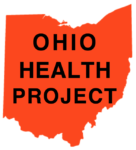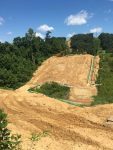For Immediate Release March 19, 2015
Contact: Dianne Bady 304-522-0246, dianne@ohvec.org
Robin Blakeman, 304-840-4877, robin@ohvec.org
Please see related info sheet here.
Rogersville Deep Shale Drilling Next for Our Area?
Landowners Approached by Oil & Gas Company Reps with Leases Advised to Lawyer Up
HUNTINGTON, W.Va. — Fracking operators are queuing up to dive into the deep Rogersville Shale deposit, located beneath eastern Kentucky and parts of southern and west-central West Virginia. (See map here.)
The Rogersville Shale is deeper than the Marcellus and Utica shale gas plays that have created a fracking boom in parts of northern West Virginia. Companies have drilled at least four test wells into the Rogersville. Exxon drilled the first well in Wayne County, W.Va. in 1975. This well is said to be the original source of information leading to the current investigation of the Rogersville Shale.
Oil and gas companies have more recently drilled test wells in Putnam County, W.Va., Johnson County Ky., and in Lawrence County Ky. Lawrence County is just across the Big Sandy River from Wayne County, W.Va.
Landowners in both states, including Wayne County, WV members of the Huntington-based Ohio Valley Environmental Coalition (OVEC), have been approached by land agents seeking to lease land. This fuels speculation that the current corporate investigation into the Rogersville “could be the beginning of our region’s first tight oil play,” according to an article in an international oil and gas newspaper.
A 2014 U.K. Kentucky Geological Survey report concludes that a “viable petroleum system exists in the Rogersville.”
West Virginia Oil and Natural Gas Association Executive Director Corky DeMarco told Natural Gas Intel’s Shale Daily, “…some operators from Kentucky to West Virginia have been busy scooping up deep mineral rights for the Rogersville Shale.”
According to DeMarco, the formations that include the Rogersville run anywhere from 10,000 to 30,000 feet below ground in West Virginia.
“… Once the (oil and gas) market rebounds, I believe we’ll continue to see companies looking at further development in the Appalachian Basin,” DeMarco told Natural Gas Intel.
While many questions surround this corporate interest in fracking the very deep Rogersville Shale, OVEC is taking this opportunity to suggest that landowners approached by oil and gas land agents seek advice from a good lawyer before signing any agreements. While leases may look lucrative, industry maneuverings can leave people with less than they bargained for, and can allow for property damage that wasn’t anticipated.
According to the WV Surface Owners’ Rights Organization (SORO) website, “You probably can refuse (or maybe block) a horizontal well on your land.” Along with extensive information useful to landowners, SORO’s website includes a list of lawyers who work on oil and gas matters.
OVEC says that it is especially important for landowners to have their water tested before any drilling activity begins, so that baseline water quality data is available.
“If the Rogersville shale is developed, any leaks or spills could ultimately drain into the Ohio River. Any spills from future fracking in eastern Kentucky or in Wayne County could first flow toward the Big Sandy River or other tributaries of the Ohio. The Big Sandy River joins the
Ohio River near Kenova, West Virginia,” said OVEC organizer Robin Blakeman.
“We do not claim to know the answers to the many questions that beg to be investigated. However, OVEC has more than twenty eight years of experience working with citizens to reduce egregious illegal pollution from fossil fuel activities, and because of this long and painful experience, we are not happy about fracking development of the deep Rogersville Shale,” said OVEC’s founder, Dianne Bady.
“By visiting wvhostfarms.org, local officials and potentially impacted citizens can examine northern West Virginia’s current experience with large scale fracking for natural gas,” Bady added. “Questions that beg to be answered include: What are the costs and benefits for ordinary people living in the midst of northern West Virginia’s fracking boom areas? Why does the state of West Virginia refuse to release information about the number of West Virginians employed in the fracking industry, as compared to out of state workers brought in by the companies? Why is it that the state of New York has recently banned fracking there?”
Bady added, “More than 100 businesses in Western Maryland are now calling for a fracking moratorium there, as part of a proposed state legislative bill. The bill mentions concerns over health, pollution and harm to tourism. West Virginians would do well to put a Rogersville fracking moratorium in place to give us all time to answer these questions.”
###
Please see related info sheet here.








Will there be any deep wells in Martin Co. Ky for the Rogersville Shale?
so far the permits granted for production are in Lawrence and Johnson counties, but there are other nearby counties with much leasing.
What companies were granted the permits
Hi Angela, apologies for the delay in replying. We have a slide from a PowerPoint that shows a list of eighteen companies that have carried out Rogersville leasing just across the border in KY (only for three counties, and for new leases between Jan. 2014 and June 2015). If you’d like us to e-mail you that slide, let us know. You can shoot an e-mail to info@ohvec.org with “rogersville slide” in the subject line.
Hard Rock Exploration has the Rogersville test well in Putnam County, WV. Cabot Oil & Gas – has leased over a million acres in SW WV and Cimirex has also been active in WV.